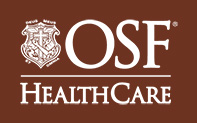Clinical Outcomes Following Parafascicular Surgical Evacuation of Intracerebral Hemorrhage: A Pilot Study
| Status: | Completed |
|---|---|
| Conditions: | Neurology |
| Therapuetic Areas: | Neurology |
| Healthy: | No |
| Age Range: | 18 - 80 |
| Updated: | 5/20/2016 |
| Start Date: | September 2013 |
| End Date: | October 2014 |
This study is determining the clinical outcomes, based on neurological testing, for the
parafascicular minimally invasive clot evacuation technique. We will collect data from the
time of surgery up until 90 days post procedure. We will also be looking at financial data
as well.
- H(0): there is no economic benefit to the system with early surgical intervention for
ICH
- Alternative Hypothesis:H(1) Assuming clinical equipoise, i.e., no benefit in clinical
outcome with early surgical intervention (null hypotheses) H(0) is correct), the
ability to accelerate the patients care from the entry point to the exit point will
result in a significant economic advantage to the system through cost reduction.
parafascicular minimally invasive clot evacuation technique. We will collect data from the
time of surgery up until 90 days post procedure. We will also be looking at financial data
as well.
- H(0): there is no economic benefit to the system with early surgical intervention for
ICH
- Alternative Hypothesis:H(1) Assuming clinical equipoise, i.e., no benefit in clinical
outcome with early surgical intervention (null hypotheses) H(0) is correct), the
ability to accelerate the patients care from the entry point to the exit point will
result in a significant economic advantage to the system through cost reduction.
Patients will be recruited form the neurology and neurosurgery services at OSF Saint Francis
Medical Center. Potential subjects will be identified by the study team which will include
all investigators and study coordinators. For those patients who have had the Mi Space
procedure, the study team will obtain the patients or patient's surrogate consent for
clinical data of hospitalization and follow ups. A secured, de-identified log will be kept
of all patients screened, and reasons for exclusion will be documented. Around 65% of
unselected patients with ICH (not stratified by baseline predicted risk) have a documented
30 day composite outcome of death or dependency under medical management. Reviews of other
types of minimally-invasive ICH surgeries provides data that significantly improved outcomes
(meta-analysis odds ratio 0.54(0.39, 0.76)). An odds ratio of 0.54 shows a reduction in risk
from 65% to about 50% (15% absolute reduction). Assuming the new procedure is at least as
effective than current conventional management, 50 patients provides 66% surety that a 95%
1-sided confidence interval will exclude the chance that the new procedure is worse than
medical management. Alternatively, a method of framing this, based on an exact one-sided
binomial test of a one-sample proportion and an alpha level of 5%, is that a sample size of
50 patients provides approximately 66% surety/power that the new procedure is superior to
medical management (i.e., lower than 65% suffering from death or poor functional outcomes).
The critical computed value for this particular test, to provide some initial evidence of
superiority, are observing no more than 26 patients (out of 50) suffering from death or
dependency under the surgical procedure.
Medical Center. Potential subjects will be identified by the study team which will include
all investigators and study coordinators. For those patients who have had the Mi Space
procedure, the study team will obtain the patients or patient's surrogate consent for
clinical data of hospitalization and follow ups. A secured, de-identified log will be kept
of all patients screened, and reasons for exclusion will be documented. Around 65% of
unselected patients with ICH (not stratified by baseline predicted risk) have a documented
30 day composite outcome of death or dependency under medical management. Reviews of other
types of minimally-invasive ICH surgeries provides data that significantly improved outcomes
(meta-analysis odds ratio 0.54(0.39, 0.76)). An odds ratio of 0.54 shows a reduction in risk
from 65% to about 50% (15% absolute reduction). Assuming the new procedure is at least as
effective than current conventional management, 50 patients provides 66% surety that a 95%
1-sided confidence interval will exclude the chance that the new procedure is worse than
medical management. Alternatively, a method of framing this, based on an exact one-sided
binomial test of a one-sample proportion and an alpha level of 5%, is that a sample size of
50 patients provides approximately 66% surety/power that the new procedure is superior to
medical management (i.e., lower than 65% suffering from death or poor functional outcomes).
The critical computed value for this particular test, to provide some initial evidence of
superiority, are observing no more than 26 patients (out of 50) suffering from death or
dependency under the surgical procedure.
Inclusion Criteria:
1. Inclusion Criteria:
- Consecutive patients aged at 18-80 presenting with an acute symptomatic
supratertorial primary ICH diagnosed by CT
- Symptom onset to surgery <24 hours (target <8 hours)
- Glascow Coma Score > 9
- Hematoma Volume, between 10ml and 50ml.
- Minimal or no ventricular extension (corresponding to 50% or less of each ventricle)
- NIHSS of >4 or deterioration determined by a neurologist.
Exclusion Criteria:
- Suspected secondary ICH
- Infratentorial ICH
- Isolated IVH
- Uncorrected coagulopathy
- Significant premorbid disability (mRS >1)
- Hydrocephalus
- Contraindication to safe surgical procedure as per neurosurgeon (justification for
exclusion on this basis will be recorded)
We found this trial at
1
site
OSF St. Francis Medical Center OSF Saint Francis Medical Center, licensed for 616 beds and...
Click here to add this to my saved trials
